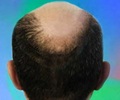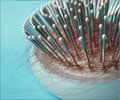Hair Loss Treatments For Women
The treatment of hair loss can be either by medical or surgical hair restoration depending on the severity of the condition.
Your doctor will usually prescribe one or a combination of the three types of treatments for hair loss:
Topical: These are medications like minoxidil and ketoconazole that are applied directly on the scalp to stimulate growth or treat dandruff or other infections.
Oral: If the topical treatment fails tablets such as spironolactone, cimetidine, cyproterone acetate (anti-androgens); hormone replacement therapy (estrogen or progesterone); and low androgen index contraceptives are prescribed. Finasteride, which is prescribed for men with hair loss, should not be taken by pregnant women or women who may get pregnant because of risk of birth defects.
A multi-vitamin or Iron tablets may also be prescribed along with the topical treatment.
Surgery: Surgical hair restoration usually involves transplanting follicles from denser areas of hair growth to thinner or bald areas. If you are looking to surgically restore lost hair, you will normally need to have at least some areas of hair that are thick and can serve as donor area.. Women with male-pattern hair loss are good candidates for hair transplantation.
Normally the hair that are located at the back and sides of the head are denser and are genetically programed not to shed and serve as donor area. Small islands of hair are removed from the donor area and using microscope or proper magnification are transplanted into the bald or area with sparse hair. Surgical hair restoration is done in one or more sittings depending on the severity of hair loss.
Surgical techniques are expensive and you should check with the doctor about the overall costs and its results before deciding on the procedure.
The current research frontiers for diffuse hair loss is looking at hair cloning techniques and should be available in the near future.









